Maggots: types, baiting and baiting
What is maggot?
The blowfly larva, better known as maggot or cagnotto, is one of the main baits for fishing and is suitable for attacking almost all fish present in our waters, both fresh and salty. Given the great demand from fishermen, it is produced artificially using meat waste (mainly poultry), there is also maggot produced using fish waste, but the latter has inferior characteristics compared to that produced with meat as it tends to sink with more effort.
Types
In addition to the classic maggot on the market we can find different variants, of different colors such as pink (the most used), orange, yellow and green, all obtained by coloring the white maggot with powdered dyes. Widely used, especially in the world of competitive sports, is the caster which is nothing other than the maggot brought to a more advanced state of maturation, that is, when it becomes a chrysalis, the larva appears cream or hazelnut coloured, a color tending towards dark brown or black means that the caster has gone too far and is no longer usable. The caster can be used both as a trigger and for baiting and is ideal especially in the colder seasons, it could also be produced at home, just place the fresh maggots in a tray and add plenty of sawdust which will then be moistened, then the container will be put away in a cool place, without sudden changes in temperature. Every 2/3 days the maggots will be placed in a sieve to ensure that the maggots that have not yet started metamorphosis and therefore will still move will fall below leaving only the casters in the sieve. The collected casters can be stored in a jar filled with water and placed in a refrigerator, the worm will sink at the right stage of maturation, while those that have been collected too late will remain afloat and it is best to remove them, for the rest I only recommend to change the water in the jar from time to time especially to avoid unpleasant odors, we can also bag them taking care to remove as much air as possible from the bag creating a sort of vacuum and always keep them in the fridge. Similar to the maggot on the market we can also find the maggots, which would be the larvae of the horsefly, in practice much larger maggots which are used almost exclusively only for baiting, unlike the maggots we can also find the raparino, a sort of much smaller maggot that can be mixed together with the groundbait or baited to undermine small fish.
Which fish can we target with the maggot?
The maggot as we said before can be used to undermine almost all the fish present in our waters, the only fish that come to mind that disdain them, but not completely, are the king pike, however it is commonly used mainly for fishing cyprinids in fresh water, while in the sea fishing from the shore they will attract sea bass, sea bream, sea bream, croaker, garfish and other rock fish such as scorpion fish and salps.
Maggot baiting and baiting techniques
Baiting with this type of bait can be done in different ways, it can be slingshotted directly onto our float if we are fishing with roubasienne or bolognese, but it can also be glued and launched, always with the aid of a slingshot, forming balls as is done with groundbait. If we need to make it sink faster (this varies depending on the fishing technique we are carrying out and the conditions dictated by the place where we are fishing) we can add breccia or quartzite to the glued maggot. It is also possible to use it for feeder fishing, using special feeders or it can be added to the groundbait, the same goes for the caster which is commonly used as an additive for the groundbait, but now let's see the many types of bait that can be made with the maggot. Once we have chosen the right size and type of hook we can bait our larva in various ways, one of these is under the skin baiting, this is done by pinning the maggot on the hook passing the latter under the skin of the bait about halfway of the body, by doing so we will have a very natural presentation of the bait as it will move like the maggots we are casting. Another way to bait it is to pin it on the tip of the tail (the stubbiest part and not the one that ends in a point) passing the hook in the part underneath the 2 dots that look like eyes, but which in reality are not, baiting it in this way the maggot will last much longer, in this case we can bait one or more maggots, perhaps alternating their colors to try to liven up the days when the fish make themselves desired. Then we have the classic or sock method, in this case the hook will be passed through the entire larva, starting from the tail and exiting from the head, the bait will be short-lived, but will undoubtedly remain anchored to the hook more firmly than others triggers resisting longer, this will allow us to use the same trigger for more prey and will be particularly useful in some fisheries such as bleak. The sock bait can be completed by adding 2/3 maggots baited for the tail so as to be able to also attract fish of a larger size than small cyprinids. Then we have the tuft bait which simply consists of baiting more maggots by the tail creating a very lively and voluminous bait.
Conclusion
In conclusion we can therefore say that given the great versatility the maggot can be used both in the sea and in fresh water, from the river where in the past we could have fun catching barbel and chub to the carp fishery where we will find carp, crucian carp and bream which will be greedy for it or fishing in sea from the beach with a feeder, English style or with a leaded float looking for some sea bass or some sea bream, in short we are talking about the bait par excellence, undoubtedly the most used by all fishermen thanks also to its low cost and its great attractive power.

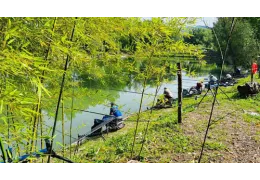
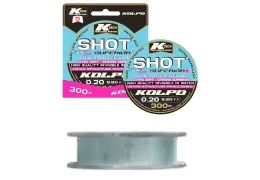
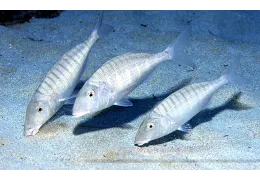
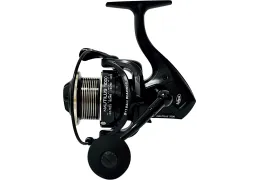
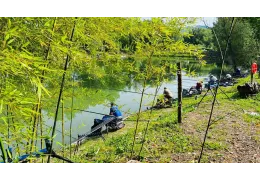

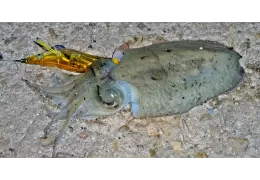
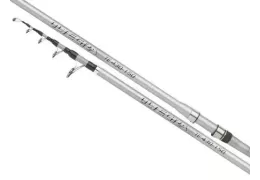



Leave a comment
Log in to post comments